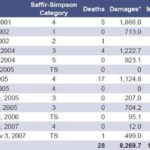The year 2005 was a watershed for disaster management worldwide and also in Cuba. Representatives of every continent met in Japan, hammering out the Hyogo Framework for Action (2005-2015), an international blue-print for risk reduction strategies and a guide for developing national platforms. In Cuba, a spate of devastating hurricanes the year before led to a reassessment of how the country was managing disasters, and to the 2005 comprehensive overhaul of national, provincial, and municipal disaster planning.
Central to the effort: Cuba’s Civil Defense High Command and Colonel José Betancourt, MD, who heads its Risk Reduction Management team. Dr Betancourt has 35 years of health administration experience under his belt, and joined the Civil Defense six years ago. MEDICC Review talked with Dr Betancourt at Civil Defense headquarters, as he left the daily staff review of the real and potential hazards affecting the country during the past 24 hours, displayed digitally on a national incident map.
 MEDICC Review: Before we delve into the changes since 2005, can you tell us a bit about how Cuba’s Civil Defense operates?
MEDICC Review: Before we delve into the changes since 2005, can you tell us a bit about how Cuba’s Civil Defense operates?
José Betancourt: Unlike some other countries, Cuba’s Civil Defense is not an agency unto itself, but rather a national system, composed of major ministries, agencies and other government institution s, as well as the country’s social and political organizations. Nationally, we have the Civil Defense High Command as a coordinating body for all these sectors and their disaster-related efforts. The most important thing is that the approach is intersectorial, and while it is centralized in some aspects, it is highly decentralized in others. For example, the head of the Civil Defense network in any given province or municipality, is the head of the provincial government, or the head of the municipal government, respectively. In turn, they preside over a Civil Defense network that involves the health department, education, transportation, food industry, the local social organizations and so on, plus all the institutions that are within their jurisdiction. The approach is to involve all the stakeholders directly in Civil Defense responsibilities and work.
MEDICC Review: Cuba’s record was a fairly good one even before the 2005 reassessment. What happened that warranted the changes, and how were they made?
José Betancourt: First, we had hurricanes Charley and Ivan in 2004, big ones which caused serious damage, although loss of life was minimal. We decided to evaluate all our experiences up to then and look at the latest best practices internationally, to do a better, more systematic job. Local meetings were organized in each of the country’s 169 municipalities, at the provincial level, and within national institutions and ministries. There were over 1,000 participants, people involved in some aspect of disaster management. Analysis, suggestions, and proposals from this exercise were analyzed centrally, and the result was Directive #1 for National Disaster Planning, Organization and Preparedness from the Vice President of the National Defense Council.
Philosophically, the main difference is that entirely more emphasis is placed on mitigation, risk reduction, and advance planning. Some of the more important changes adopted include more attention to the complexities of all four phases of the disaster management cycle (mitigation, preparedness, response, and recovery); generating the legal and technical tools to make the country’s development efforts compatible with disaster risk reduction; and insistence upon updated territorial and institutional risk assessment analyses related to the different kinds of disasters we potentially face.
The main point is this: you can’t stop the rain, the winds, or the waves, but you can make people and the economy less vulnerable to their impact.
MEDICC Review: How can we see these changes in practice.
José Betancourt: Take the issue of making socio-economic development plans compatible with risk reduction. Currently, all major investment projects must carry out a disaster risk assessment, in addition to the environmental impact assessment already required. The aim is to see that risk reduction is literally built in, according to clearly established standards for protecting people and property. Directive #1 mandated that Civil Defense work with the Ministry of Science, Technology and the Environment (CITMA) to develop guides for these studies, with the Ministry’s scientists supplying the expertise and Civil Defense establishing the priorities. Only certain institutions in the country are accredited to carry out these assessments, on the basis of a rigorous process.
You can tell whether or not risks have been thoroughly considered: just look at Havana’s shoreline hotels. Some, built years ago, are right on the seaside drive, and they are flooded every time a tropical storm hits. Others, built later with more intelligent planning, were set back far enough on elevated ground to prevent injury and damage. What we’re doing now is systematizing this kind of planning nationwide.
Housing is another example: the National Housing Institute is obligated to consider studies by national physical planners, to avoid building new housing in spots that might be in danger of mudslides, floods or other threats. And in the case of Eastern Cuba, there are technical requirements for earthquake-resistant construction.
These risk assessments for new development projects rely, in turn, on updated risk reduction studies carried out by each province and municipality.
MEDICC Review: What kinds of studies are carried out at those levels?
José Betancourt: The new guide for these studies was finished in August, 2005, and in 2006, work began accordingly. Again, we involved expe rts from CITMA, to establish the basic technical guidelines, and they a lso offer methodology seminars for people responsible for the studies at each level. Right now, all 14 provinces have completed risk reduction assessments. In the case of the municipalities -where we prioritized the most vulnerable quite a few are finished, including those for the 15 municipalities in Havana City Province. We start from the macro, prioritizing the most common types of disasters in that part of Cuban territory, wh ether intense rains, strong winds, waves a nd flooding, forest fires, earthquakes, landslides, toxic spills, massive accidents or risk of vector-borne disease, to name a few.
For each kind of potential disaster, there are core technical requirements for evaluating risk, as determined not only by CITMA, but by the agencies responsible for each activity: for example, the Ministry of Public Health in the case of potential epidemics; the Ministry of Transportation for accidents and oil spills, etc.
MEDICC Review: How does this work?
José Betancourt: The municipal government analyzes risks presented to its territory and population, due to various factors such as geographic location (coastal, mountain, etc.); history and intensity of disasters (hurricanes, tropical storms, etc.); factories or other production and service centers in its area (impact of winds, etc.); housing (state of construction), and so on. This is the first step in the municipal government’s job of reducing the vulnerability of the people and property within their jurisdiction. I should mention that each workplace is also required to make the same risk reduction assessment, so that in practice, these studies inform one another.
MEDICC Review: I understand that some municipalities and provinces have Centers for Risk Reduction Management. How do these fit in to the bigger picture?
José Betancourt: As a result of the 2005 world conference and the Hyogo Framework, we decided to establish these centers with assistance from the United Nations and various international NGOs in Cuba. We prioritized 50 of the 169 municipalities, based on history of major hydro-meteorological events, our number one type of disaster in Cuba.
We now have centers in 36 municipalities and 8 provinces, with another 20 in process. The centers function as an arm of local government, with small staffs and offices outfitted with computers, shortwave radios, audio recorders, cameras, and so on. Each center becomes the main source of information for the territorial risk reduction assessment we talked about earlier, collecting and organizing data by sector (health, education, transport, etc.), and stratifying risk geographically, down to the neighborhood level. In some municipalities, the centers are also associated with Early Warning Posts in communities that are easily cut off when a hurricane strikes. Everywhere, the center staff are responsible for chronicling any new disaster affecting the area.
This gives local governments a tool -an evidence base- that points to risks and vulnerabilities within the territory, and this in turn indicates where they have to put their resources, however modest. The idea isn’t just to analyze, but to take action.
MEDICC Review: Limited resources are of course an issue for many countries?
José Betancourt: Yes, of course. And Cuba, like other countries, is dealing with accumulated vulnerabilities that can’t be eliminated overnight. We’re working gradually, little by little. The most important thing, however, is not to rebuild the same vulnerabilities after disaster strikes.

Rebuilding sturdier post-hurricane houses, Guantánamo Province.
Other aspects are not so dependent on material resources, but only on getting a better understanding in order to make change. Take our experien ce with Hurricane Dennis in 2005 , which hit the eastern province of Granma. Dennis resulted in 17 deaths, very high for Cuba. But when we took a closer look, we found that low perception of risk played a big role: there hadn’t been such a big storm in that are a for years, and the experience had faded from collective memory. So, the usual number and content of advisories weren’t as effective as we thought.
MEDICC Review: Tell me about evacuation: this has been a topic of international discussion, and it seems an area where we see evolving approaches in Cuba.
José Betancourt: We’re talking here more about protection than evacuation; and we start from the premise that it’s the government’s responsibility to protect 100% of the population. That’s why in a storm, for example, electricity is centrally shut off when winds reach a certain velocity, and so, too, is cooking gas.
The risk reduction studies I’ve described include the numbers of people who need to be protected in a given disaster. At the same time, we stratify the population by risk to reduce vulnerability to a minimum: people are prioritized because they are geographically at risk (the shoreline in a hurricane, for example). We also automatically prioritize people who are elderly, ill, and disabled, as well as pregnant women, and children. All of them are informed well in advance if they’ll need to evacuate. People know who they are and know where to go.
Several approaches help with this: first, families are kept together (meaning schools are usually closed). Second, the more local the shelter, the better. Sometimes a maternity home, school or cultural center, sometimes a neighbor’s house, will provide a safe place. After Dennis hit the mountains in Granma, it was decided that for every 10 houses at risk in isolated areas, one would be reinforced to provide local shelter -the selection is up to the community. This is another way to channel scarce resources.
Finally, we make sure basic appliances are protected, by evacuating them under custodial care; and we evacuate farm animals and pets.
MEDICC Review: Pets, too?
José Betancourt: Yes, cats and dogs, plus horses, cattle, and pigs. This was a lesson we learned in 2001, when we had to evacuate 40,000 people next to the Lebrije Dam in central Sancti Spíritus Province. We got the people out, but then eight to ten hours later, we had to go back to take food and water for the animals. And if it had been longer, then these animals would have been in real trouble. Internationally, there have also been instances where, hungry, the animals have attacked relief workers.
MEDICC Review: What are the main challenges ahead for Cuba’s disaster mitigation efforts?
José Betancourt: Doing the job better-making sure we don’t rebuild vulnerability, as I said before. Seeing to it that new socioeconomic development projects conform to rigorous standards for protecting people and property, which is a complex task. We have to improve the risk reduction studies, and offer more continuing education to disaster decision-makers. But our biggest challenge is the climate change that is already upon us. The ecological damage internationally is clear, and recent studies show an annual temperature increase in Cuba of 0.5°C, plus greater frequency of extreme hydro-meteorological events (including droughts) and more influence by El Niño and the entire ENSO (El Niño Southern Oscillation) phenomenon. We have to adopt long-range strategic measures to face the facts of climate change -change that unfortunately is only reversible if others more powerful than Cuba realize what they must do.
Storms Over Cuba, 2001-2007

* In millions of Cuban Convertible Pesos (CUC). 1 CUC=.926 US$ TS: Tropical Storm; all others are hurricanes. Source: National Civil Defense Headquarters, Havana, June 8, 2008.

Evacuation by train, Granma Province, Tropical Storm Noel.
MEDICC Review, Summer 2008, Vol 10, No 3







